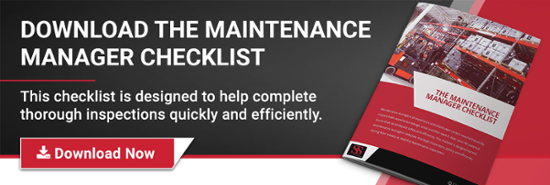As a warehouse manager, ensuring that your employees who are working with industrial batteries, forklift batteries, and industrial chargers are always safe on the job should be a top priority. Why? If improperly handled or maintained, these items can present numerous safety hazards that put your staff, machinery, inventory, and brand reputation at risk.
Having the proper battery safety equipment in your warehouse can proactively minimize the chances of a battery-related incident, as well as help you handle the aftermath in case one does unfortunately occur.
This battery safety equipment isn’t just a “nice-to-have” bonus in your warehouse—it’s required to meet OSHA regulations. If you aren’t in compliance, it could result in hefty fines or penalties that take resources away from other business ventures. To help you avoid these consequences, we’ve compiled this list of the battery safety equipment you need to have in your warehouse!
Understanding OSHA Regulations
After the passing of the Occupational Safety and Health Act in 1970, Congress created the Occupational Safety and Health Administration (OSHA). Its goal is to create and protect safe and healthy working conditions for private sector employers and their employees.
The organization sets and enforces safety standards in a wide variety of industries, plus provides training, outreach, education, and assistance to ensure they are carried out. The OSHA regulations surrounding industrial batteries (such as forklift batteries) specifically can be found in 29 CFR, part 1926.
Forklift Battery Safety Equipment You Need in Your Warehouse
To help prevent workplace injuries related to industrial or forklift batteries, it’s vital to provide your employees with the necessary battery safety tools—here are eight that should always be present in your warehouse!
- Emergency wall-mounted eyewash station. When dealing with industrial batteries, acids or electrolytes can splash into the eyes, which is very painful and can even result in long-term vision problems. Therefore, setting up an emergency wall-mounted eyewash station is vital so first aid is immediately available after an eye injury. Per OSHA regulation 1926.441(a)(6), eyewash stations should be within 25 feet of any battery charging station or handling areas.
- Battery room safety wear kits. These kits will include personal safety wear appropriate for most battery room maintenance activities. For example, OSHA regulation 1926.441(a)(5) requires all warehouse employees handling acids or industrial batteries to have face shields, aprons, and rubber gloves.
- Battery spill containment systems. When charging or servicing industrial batteries at your battery charging station, it’s required to use a spill containment system. They will typically include a tray lined with absorbent material to catch any spilled electrolyte solutions, reducing the environmental impact of leaking batteries and preventing warehouse employees from being splashed with acids that can cause burns and damage clothing.
- Battery spill clean up kits. In the event of a battery acid leak or spill, clean up kits should always be easily accessible. Keeping them in your forklift or battery storage areas is needed for compliance with OSHA 1910.178(g)(2). Kits will often include basic personal safety wear, clean-up equipment, acid neutralizing agents and non-gassing acid absorbing pillows to contain spilled electrolyte, and Neutralizing Acid Absorber™ in compact rigid pails with removable lids.
- Battery room signage. OSHA approved signage that informs warehouse employees and visitors of potential safety hazards must be clearly posted in every battery room.
- Hydrogen gas detectors. Hydrogen gas is generated as a byproduct when recharging industrial batteries. Since it can be explosive in high concentrations, OSHA requires that every battery room has a functioning hydrogen gas detector to monitor its density of gas.
- Proper ventilation. OSHA has strict requirements that each battery room is equipped with, “Adequate ventilation to ensure diffusion of the gases from the battery and to prevent the accumulation of an explosive mixture.” An effective ventilation system reduces and diffuses hydrogen gas levels, which helps to prevent the risk of an explosion while improving air quality so employees working in your battery room can breathe easier. Additionally, unsealed batteries must be stored in an area with outside vents or in a well ventilated room to prevent the escape of fumes, gases, and electrolyte spray.
- Smoke detectors and fire extinguishers. Even with hydrogen gas detectors and proper ventilation in your battery room, accidents can still happen. Therefore, OSHA requires that smoke detectors and fire extinguishers are present in every battery room in the unfortunate case that a fire or hydrogen gas explosion does occur.
At Southern States Enterprises, we provide best-in-class battery safety equipment that your warehouse can rely on long-term. Our motive power expert technicians also teach both on and off-site battery classes that include general information about forklift batteries, industrial chargers, and electricity safety.
If you’re looking to implement new battery safety equipment in your warehouse, or are interested in partaking in our industrial battery training and education program, contact an SSE expert today!






